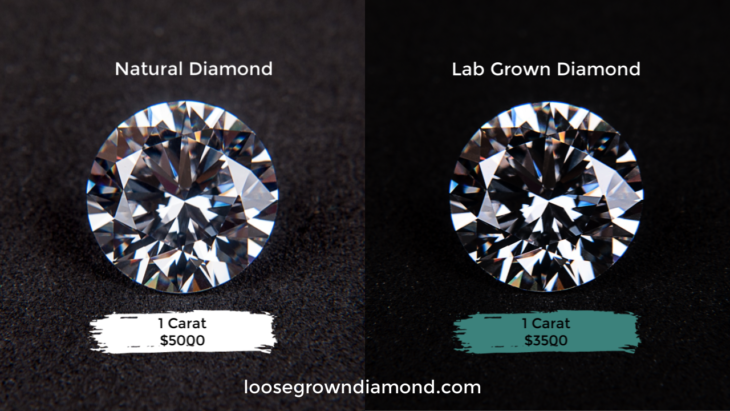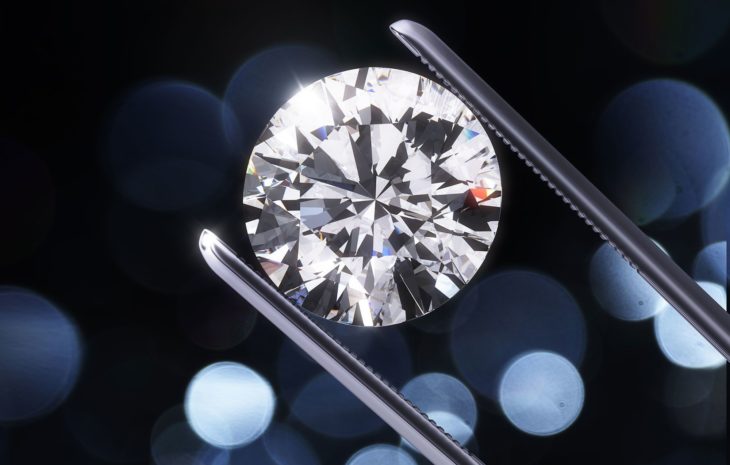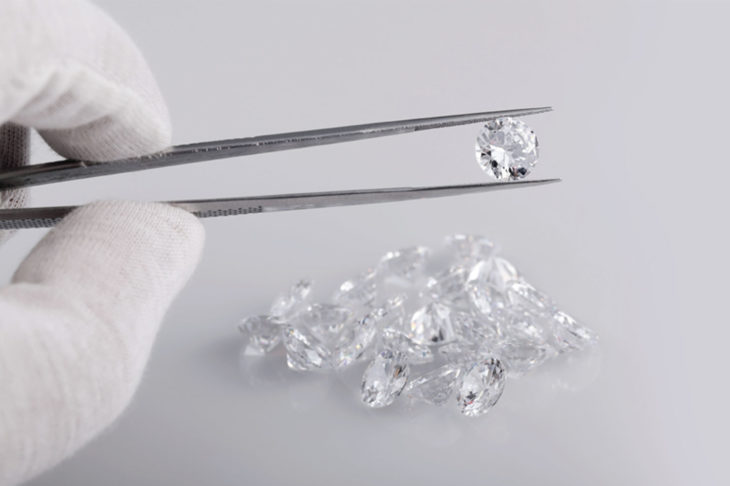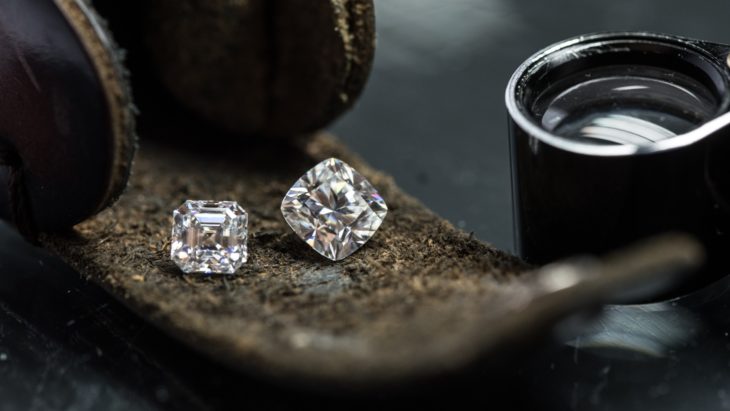Buying a diamond is a tricky choice whether it is a white or a coloured one. There are many choices available regarding the colour, carat, and clarity but the main choice which a buyer needs to make is whether they want a lab grown or a natural precious stone?

For years people have been discouraged to buy lab created diamonds, because they believed that they aren’t the real ones. However, is this true? Well, in fact, lab-created precious stones are considered to be real because they possess the same physical, chemical and optical properties as the natural ones.
The FCT (Federal Trade Commission) backed this fact up recently, revising their definition of a diamond and removing the word ‘natural’ from it. According to FCT “The Commission no longer defines a ‘diamond’ by using the term ‘natural’ because it is no longer accurate to define diamonds as ‘natural’ when it is now possible to create products that have essentially the same optical, physical, and chemical properties as mined diamonds” (Source: Forbes)
The Federal Trade Commission recently revised its Jewellery Guides, in order to prevent deception of lab created items in the market. They said they would believe scientific facts and not ‘minded-diamond industry lobby’. These guides are formed to prevent consumers from deceitful purchases and assist them to make informed purchasing decisions.
Contents
Amends made by The Federal Trade Commission (FCT)
It was during 1956 a decision was taken to coin the term itself and it included the word ‘natural’. After that certain technological advances had made it possible to produce lab grown loose and CVD diamonds; as well as HPHT synthetic method. Due to which the FCT decided to eliminate some words from their definition related to mined and man made precious stones. Here are the changes,
- The new definition is ‘A diamond is a mineral consisting essentially of pure carbon crystallized in the isometric system.’
- The word ‘natural’ has been removed from this definition.
- There is no mention of the word ‘synthetic’ for man made ones; as they believe they are real.
- The FCT has clearly stated that diamond simulants are prohibited from being referred to like diamonds.
- The guide also clarifies that the use of words like ‘laboratory-grown’, ‘Lab-created’, and ‘hybrid’, is unfair and deceitful.
- The man-made diamond industry can call their products ‘cultured’, ‘gems’, ‘gemstones’.
Overall the FCT stated that a precious stone is real whether it is grown in a lab or comes out of the ground.
The benefits of this are binary. In other words, there are benefits both for the consumers and the industry. Take a look at the following text for more information.
Benefits for the Consumers

Source: betterdiamondinitiative
These amends in the jewellery guides though raised concerns for the mined diamond industry but was a great win for consumers. The benefits include things like quality, colour, and budget-friendliness.
- High-quality
When it comes to the quality of a lab-grown precious stone, it is considered to be less damaged than the mined one. Also, it is clearer since it doesn’t have stuff like dirt on it, because it was ‘synthetically’ produced.
- Colour
Now sellers and retailers could officially state that their man made loose, fancy, white and even coloured diamonds were all real ones. In the past, coloured examples of this stone were extremely rare, and, therefore, expensive. Luckily, today, thanks to the advancements in technology, coloured representatives of this precious stone are easy to find. On top of that, they are even shinier and brighter compared to the mined ones.
- Affordable
Even though diamonds are still considered to be a kind of luxury, those produced in the lab are by far more affordable. Therefore, if you don’t want to spend an enormous sum of money, the lab-produced ones should be your first choice.
To sum up the benefits for the consumers, the key thing is for the sellers to educate the customers of the guidelines and how these lab created stones were equivalent to or even better than natural ones. If you are looking for purchasing lab created diamonds from direct manufacturer, click here.
Benefits for the industry

Source: betterdiamondinitiative
Not only do consumers benefit from the whole story, but the whole industry can profit as well. This refers to things like credibility, familiar origin and eco-friendliness.
- Credibility
Due to the fact that these kinds of diamonds do not require mining, no human lives were put in danger in order to produce them. It can happen that conditions get dangerous when it comes to mining. By producing in this way, the industry can get credibility and respect from the consumers.
- Familiar origin
The industry has often been criticised for the unknown origin of diamonds. Furthermore, it has been speculated that human rights are not followed when it comes to the production. This includes child labour and violence which threatens the minors. By producing in the lab, human rights are obeyed and the consumer can know exactly where and how their item was created.
- Environment
Mining generally damages the environment. Due to the fact that everyone should be ecologically aware, lab-grown diamonds are perfect, since they do not damage the environment.
Overall, the industry now has an official declaration that their loose, fancy, coloured, and white diamonds were real and not ‘synthetic’. As these lab grown fancy precious stones are already 20%-30% cheaper than natural ones, they got an upper hand and had customers wanting to buy their precious stones. Customers could get a bigger stone at a lower cost, and that also with guaranteed quality.

Source: oaklins
Conclusion
To conclude, purchasing an item like this is beneficial in many ways. Thanks to the progress of technology, we can now possess a piece of precious stone without damaging the environment, or disobeying the human rights. Moreover, these products are of high-quality and very affordable. In the end, it was a win both for the consumers and industry!
